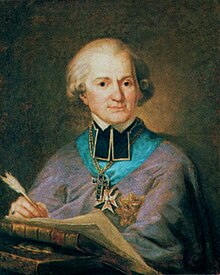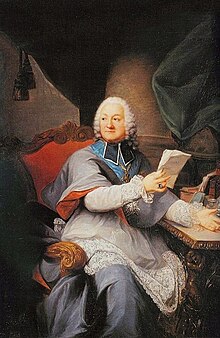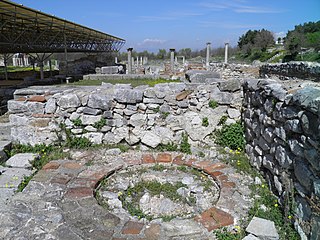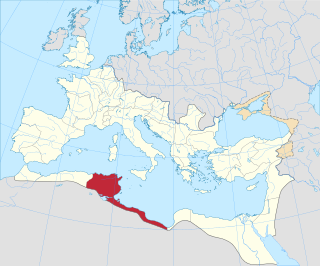
The Diocese of Emmaus is an ancient and titular diocese of the Roman Catholic Church, located in Emmaus/Nicopolis, Israel, (modern Imwas). The current bishop is Giacinto-Boulos Marcuzzo who resides in Nazareth.

The Diocese of Emmaus is an ancient and titular diocese of the Roman Catholic Church, located in Emmaus/Nicopolis, Israel, (modern Imwas). The current bishop is Giacinto-Boulos Marcuzzo who resides in Nazareth.

Being a small town only 7.5 mi (12.1 km) from Jerusalem, the village of Emmaus was not initially a bishopric, [4] but rather part of the bishopric of Jerusalem. [5]
In 131 CE, Christian scholar and writer Julius Africanus of Jerusalem, headed an embassy to Rome and had an interview with the Roman emperor Elagabalus on behalf of Emmaus. Soon after it was refounded to become a "city" (πόλις), which quickly became famous, and was given the qualification of "Nicopolis". [6]
Eusebius a century later writes
Emmaus, whence was Cleopas who is mentioned by the Evangelist Luke. Today it is Nicopolis, a famous city of Palestine. [7]
Jerome described how the towns congregation "consecrated the house of Cleopas as a church." [8]


The bishopric of Emmaus was mentioned by St. Jerome, [9] Hesychius of Jerusalem, [10] Theophanes the Confessor, [11] Sozomen, [12] and Theodosius. [13]
In 222 CE, a basilica was erected there, which was rebuilt first by the Byzantines and later modified by the Crusaders. [14] This Diocese, however, must not have been of significance, being represented at only one of the first four councils [15] nor mentioned by Michel Le Quien [16] but was in the Notitiae Ecclesiastica . [17]
The ancient bishopric ended when the Islamic armies entered the city. At the time of the Muslim conquest of Palestine, the main encampment of the Arab army was established in Emmaus, when a plague struck, killing as many as 25,000 of the army.
In the 7th century both Willibald of Eichstätt [18] and Hugeburc von Heidenheim, in her The Life of St. Willibald both describe the town church and "holy well".
The church was one of 30,000 Christian buildings destroyed in 1009AD by al-Hakim bi-Amr Allah, the Fatimid caliph of Egypt.
In the 12th century William of Tyre, described the abundance of water and fodder in the area around the town, and Daniel Kievsky wrote of the site, "but now all is destroyed by the pagans and the village of Emmaus is empty." John Phocas (ca.1185) also described the town.
The Bishopric was re-established in 1099 when the army of the First Crusade, arrived in the town. But came under the rule of the Ottoman Empire in the early 16th century and, the church built by the Crusaders converted into a mosque.
In 1930, the Carmelite Order built a monastery, the House of Peace, on a tract of land purchased in the town in 1878. Three years later it was established as a titular see in the Roman Catholic Church.


Salamanes Hermias Sozomenos, also known as Sozomen, was a Roman lawyer and historian of the Christian Church.

Emmaus is a town mentioned in the Gospel of Luke of the New Testament. Luke reports that Jesus appeared, after his death and resurrection, before two of his disciples while they were walking on the road to Emmaus.
Hierocaesarea or Hierokaisareia, from the Greek for 'sacred' and the Latin for 'Caesar's', also known as Hieracome or Hierakome, was a town and bishopric in the late Roman province of Lydia, the metropolitan see of which was Sardis. It was inhabited during Hellenistic, Roman, and Byzantine times.

Imwas or Emmaus, known in classical times as Nicopolis, was a Palestinian village located 12 kilometres (7.5 mi) southeast of the city of Ramla and 26 kilometres (16 mi) from Jerusalem in the Latrun salient of the West Bank. It is traditionally identified with the biblical Emmaus. Its population was expelled and its buildings razed by Israeli forces in 1967.
The Diocese of Scythopolis is a titular see in Israel/Jordan and was the Metropolitan of the Roman province of Palestina II. It was centered on Modern Beth Shean (Bêsân).

Giacinto-Boulos Marcuzzo is a Roman Catholic Auxiliary Bishop Emeritus of the Latin Patriarchate of Jerusalem, resident in Nazareth. As at December 2020, he was Latin Patriarchal Vicar for Jerusalem and Palestine.
Daldis, was a town on the borders of ancient Lydia and Phrygia, a former bishopric, and is now a Latin Catholic titular see. It also minted coins in antiquity with the legend Δαλδιανων. It also bore the name Flaviocaesaria or Phlabiokaisareia, which is not attested among ancient authors but is reconstructed from epigraphic and other evidence.

The St. Cleophas Church or St. Cleopas Church also called Emmaus Church or the Basilica of St. Cleophas, is a Franciscan Catholic church located in the Palestinian village of Al-Qubeiba in the West Bank. The site is one of the three major candidates identified with Emmaus, where, according to the New Testament, Jesus revealed himself to two of his disciples shortly after his resurrection. About half a mile west of the church lies a Franciscan lodge.
Acrassus or Akrassos was an ancient Roman and Byzantine-era city in Lydia. in the Roman province of Asia and Lydia. Apparently, it is the same place that Ptolemy calls Nacrasa or Nakrasa, placed on the road from Thyatira to Pergamum.

Tabala, was a Roman and Byzantine town and a Bishopric in ancient Lydia. Tabala was on the Hermus River, and minted its own coins. It was probably mentioned by Hierocles under the name of Gabala, which is perhaps only miswritten for Tabala. It is even possible that it may be the town of Tabae or Tabai (Τάβαι), which Stephanus of Byzantium assigns to Lydia.

Mesotymolus was an ancient Roman and Byzantine-era city on the Hermus River in ancient Lydia.

Aptuca (Africa) or Henchir Oudeka, also known as Aptucca/Aptuca, Henchir-Oudeka/Henchir-Semmech. or Udeka is a village and archaeological site in Tunisia, North Africa located at 36.409344, 8.940301.

The Metropolis of Philippi, Neapolis and Thasos is a Greek Orthodox metropolitan see in eastern Macedonia, Greece. It was founded in the ancient city of Philippi, where it was based until the destruction of the host city in the 14th or 15th century. Today it is based in the city of Kavala. Although being subject to the Ecumenical Patriarchate of Constantinople, it is administered by the Church of Greece.
Tacarata, was an ancient Roman era oppidum (town) in the Roman-Berber province of Numidia. It is identified with ruins in the territory of Mila or Annaba in modern Algeria.

Auzegera was a Roman-Berber town in the province of Africa Proconsularis and in late antiquity Byzacena. It was a Catholic Church diocese.

Iubaltiana was a Roman–Berber civitas (town) in the province of Africa Proconsularis and in late antiquity in Byzacena. The town has been tentatively identified with ruins near Kairouan in today's Tunisia.
Cenculiana was a Roman era town in Roman North Africa.

Lapda, was a civitas (town) of the Roman province of Africa Proconsularis. Its exact location is now lost to history, though probably somewhere in central modern Tunisia. Also known as Labdia.

Castellum Minus was an ancient city located in the Roman province of Mauretania Caesariensis in today's northern Algeria. The ancient city is identified with ruins near Coléa, Algeria,.

Giru Mons is an ancient town of the Roman Empire and a titular bishopric of the Roman Catholic Church. The ancient town has been tentatively identified with ruins at Yerroum, northern Algeria.